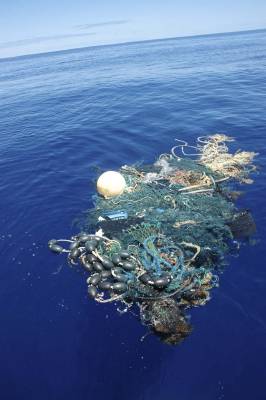Scripps Environmental Accumulation of Plastic Expedition (SEAPLEX) researchers decided to find out if it lived up to its moniker.
It wasn't a pretty sight.
The Scripps research vessel (R/V) New Horizon left its San Diego homeport on August 2, 2009, for the North Pacific Ocean Gyre, located some 1,000 miles off California's coast, and returned on August 21, 2009. They surveyed plastic distribution and abundance, taking samples for analysis in the lab and assessing the impacts of debris on marine life.
After transiting for six days aboard the research vessel, the researchers reached their first intensive sampling site on August 9th. Team members then began 24-hour sampling periods using a variety of tow nets to collect debris at several ocean depths.
The scientists found that at numerous areas in the gyre, flecks of plastic were abundant and easily spotted against the deep blue seawater. Before this research, little was known about the size of the "garbage patch" and the threats it poses to marine life and the gyre's biological environment.

Imagine this large net tangled with plastic, only 100,000 times bigger. Credit: Scripps Institution of Oceanography
Among the assortment of items retrieved were plastic bottles with a variety of biological inhabitants. The scientists also collected jellyfish called by-the-wind sailors (Velella velella).
On August 11th, the researchers encountered a large net entwined with plastic and various marine organisms; they also recovered several plastic bottles covered with ocean animals, including large barnacles.
The next day, Pete Davison, an SIO graduate student studying mid-water fish, collected several species in the gyre, including the pearleye (Benthalbella dentata), a predatory fish with eyes that look upward so it can see prey swimming above, and lanternfish (Tarletonbeania crenularis), which migrate from as deep as 700 meters down to the ocean surface each day.
By the end of the expedition, the researchers were intrigued by the gyre, but had seen their fill of its trash.
"Finding so much plastic there was shocking," said Goldstein. "How could there be this much plastic floating in a random patch of ocean--a thousand miles from land?"





Comments